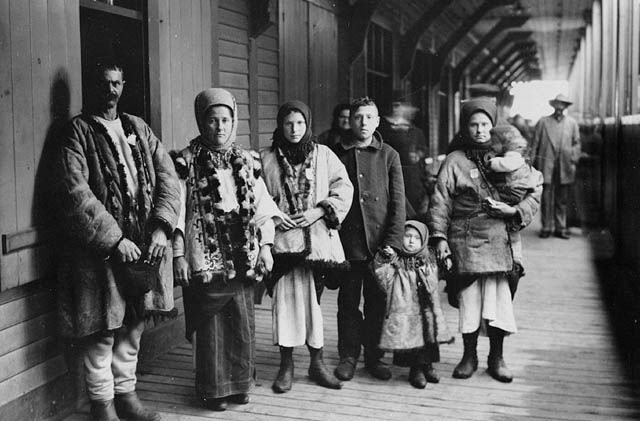Pieśń emigrantów
Gdy nasz lud roboczy, kłamstwami karmiony,
Gnił w nędzy i marł od oręża –
I bezpiecznie ukryci, zbijali miliony
Dziedzice, bankierzy i księża.
O, cześć wam, panowie magnaci,
Za ludu cierpienia, niedolę!
O, cześć wam, paskarze, grabieżcy i kaci,
Za ludu tułaczkę, niewolę!
Gdy pokój nastąpił po wojnie na wschodzie,
Robotnik powrócił do domu –
Czy będzie miał pracę, czy zginie o głodzie,
Zatroszczyć nie było się komu.
O, cześć wam…
Gdy żołnierz powrócił przez rząd okłamany,
Ni chleba, ni pracy rząd nie dał –
By buntu nie podniósł lud, nędzą sterany,
Francuskim burżujom go sprzedał.
O, cześć wam…
Lecz próżne nadzieje, że patron tutejszy
Wyuczy lud polski pokory –
Nie wróci do Polski robotnik ciemniejszy,
Nie wróci do walki nieskory!
O, cześć wam…
I czas gdy nadejdzie, lud wróci z oddali,
Zażąda od panów rachunku,
Nad krajem się łuna powstania rozpali,
Burżujom nie będzie ratunku!
O, cześć wam…
Nadejdzie godzina ostatniej rozprawy,
Zgnębiony kapitał upadnie.
Uleci znad ziemi znękanej cień krwawy
I wolność tą ziemią zawładnie!
O, cześć wam…



The socialist movement actively tried to attract emigrant workers. The theme of the hard labour of workers in factories or sweatshops appears in the works of socialists, who were often emigrants themselves. Some songs were anthems, and were created for that collective singing. An example of this is the Polish émigré song. There, emigrants leave their native land because of social injustice. Landlords, magnates, and priests are opposed to oppressed workers or soldiers who returned from the war and did not receive the expected guarantees. At the same time, the song emphasizes the temporary nature of emigration, because emigrants will return to their native land to make a revolution.